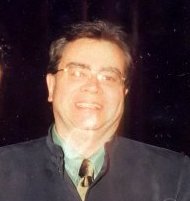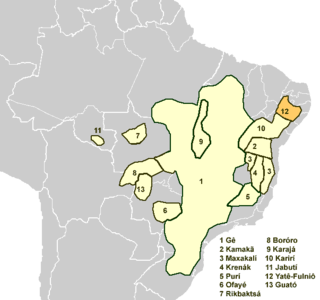
The University of Trás-os-Montes and Alto Douro is a public university located in the north-eastern city of Vila Real, Portugal.

The State University of Campinas, commonly called Unicamp, is a public research university in the state of São Paulo, Brazil.

Science and technology in Brazil has entered the international arena in recent decades. The central agency for science and technology in Brazil is the Ministry of Science and Technology, which includes the CNPq and Finep. This ministry also has a direct supervision over the National Institute for Space Research, the National Institute of Amazonian Research, and the National Institute of Technology (Brazil). The ministry is also responsible for the Secretariat for Computer and Automation Policy, which is the successor of the SEI. The Ministry of Science and Technology, which the Sarney government created in March 1985, was headed initially by a person associated with the nationalist ideologies of the past. Although the new minister was able to raise the budget for the science and technology sector, he remained isolated within the government and had no influence on policy making for the economy.

São Paulo State University is a public university run by the state government of São Paulo, Brazil.
SOX is a discontinued UNIX clone. It was developed from scratch in Brazil, in the late 1980s, by Computadores e Sistemas Brasileiros S/A, under the leadership of Ivan da Costa Marques. Certified as UNIX-compatible by X/Open in early 1989, SOX was one of the first re-implementations of UNIX, fully independent of AT&T, that passed the X/Open verification tests, and the only one ever completed entirely outside the United States.
Amir Ordacgi Caldeira is a Brazilian physicist. He received his bachelor's degree in 1973 from the Pontifícia Universidade Católica do Rio de Janeiro, his M.Sc. degree in 1976 from the same university, and his Ph.D. in 1980 from University of Sussex. His Ph.D. advisor was the Physics Nobel Prize winner Anthony James Leggett. He joined the faculty at Universidade Estadual de Campinas (UNICAMP) in 1980. In 1984 he did post-doctoral work at the Kavli Institute for Theoretical Physics (KITP) at University of California, Santa Barbara and at the Thomas J. Watson Research Laboratory at IBM. In 1994–1995 he spent a sabbatical at the University of Illinois at Urbana-Champaign. He is currently a full professor at Universidade Estadual de Campinas. He was the recipient of the Wataghin Prize, from Universidade Estadual de Campinas, for his contributions to theoretical physics in 1986.
Cláudio Ulpiano Santos Nogueira Itagiba was a Brazilian philosopher and expert on the work of Gilles Deleuze. He taught at the Universidade do Estado do Rio de Janeiro and Fluminense Federal University.

José Antônio Rezende de Almeida Prado or Almeida Prado was an important Brazilian composer of classical music and a pianist. On Almeida Prado's death, his personal friend, conductor João Carlos Martins stated that Prado had possibly been the most important Brazilian composer ever.

Guató is a possible language isolate spoken by 1% of the Guató people of Brazil.

The SBTVD Forum is a non-profit organization of private and public companies responsible for the general aspects of Digital TV deployment in Brazil. The organization was founded in 2007 in order to address all technical issues regarding the upcoming SBTVD standard, also known as ISDB-Tb.

Bombay Before the British (BBB) was a three-year research project in the fields of History of Architecture and History of Urbanism, funded by the Portuguese Ministry of Science, Technology and Higher Education through its Science and Technology Foundation (FCT).

Cosmoclopius nigroannulatus is a species of assassin bug family (Reduviidae), in the subfamily Harpactorinae. It is a predator of pests in tobacco fields. Its main prey is the tobacco grayish bug, Spartocera dentiventris Berg.

Fulniô, or Yatê, is a language isolate of Brazil, and the only indigenous language remaining in the northeastern part of that country. The two dialects, Fulniô and Yatê, are very close. The Fulniô dialect is used primarily during a three-month religious retreat. Today, the language is spoken in Águas Belas, Pernambuco.
Hélio Waldman is a Brazilian scientist best known for his work as rector of the Universidade Federal do ABC, UFABC (2010–2014) and as dean of research at the Universidade Estadual de Campinas, Unicamp (1986–1990). Currently working as a researcher and rector of UFABC.
Flausino Rodrigues Valle, better known as Flausino Vale was a Brazilian violinist/composer. Although he was a lawyer, he was a major researcher on Brazilian folk music. He was professor of History of Music at the Conservatório Mineiro de Música. Like Paganini, he had composed an album of 26 Preludes for solo violin in a Brazilian landscape style.

The School of Mechanical Engineering is one of the colleges at the State University of Campinas in Campinas, São Paulo, Brazil. It offers undergraduate and graduate programs in mechanical engineering and mechatronics. FEM is one of the most highly regarded schools for mechanical engineering and mechatronics in both Brazil and Latin America, as well being ranked the highest on the CAPES evaluation.
"Isto É Bom" is a song written by Xisto Bahia and released by singer Baiano in 1902, through Casa Edison, labeled as Zonophone. This song is considered by many Brazilian music specialists as the first recorded song in Brazil.










